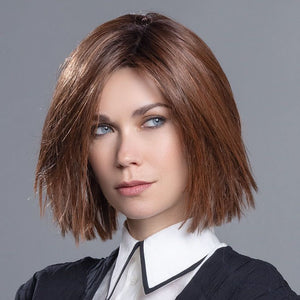Do Wigs Make Your Head Sweat? Debunking the Myth

Model is wearing Tori wig from the Rene of Paris Hi Fashion collection, colour is Creamy Toffee.
Wigs have been used for centuries as a fashion statement, a means of concealing hair loss, or simply as a fun way to change one's look. However, there's a common myth that wearing a wig can make your head sweat excessively. Is there any truth to this claim, or is it just another misconception? In this blog, we'll explore the factors that contribute to head sweating when wearing wigs and debunk this widely held belief.
Understanding the Concern
The belief that wigs make your head sweat is not entirely unfounded. Some wig wearers have reported experiencing discomfort and increased sweating while wearing wigs. However, it's essential to understand that not all wigs are created equal, and several factors contribute to this perception.
1. Wig Materials: The type of material used in a wig can significantly impact how much your head sweats. Synthetic wigs, for example, are less breathable than those made from natural human hair. This reduced breathability can lead to increased heat and moisture retention, making your head feel warmer.
2. Cap Construction: The construction of the wig cap plays a vital role in ventilation and comfort. Some wig caps are designed with more breathable materials or built-in ventilation features, while others may trap heat and moisture.
3. Climate and Environment: Environmental factors, such as the temperature and humidity of your surroundings, can also influence how your head feels when wearing a wig. Hot and humid conditions can make anyone feel warmer and potentially sweat more, wig or no wig.
Debunking the Myth
Now that we've identified the factors that contribute to the perception of head sweating with wigs, let's debunk the myth:
1. Wig Selection: If you choose a high-quality wig made from natural human hair or a synthetic wig with breathable materials, you're less likely to experience excessive sweating. Be sure to consider the wig's material and cap construction when making your selection.
2. Proper Wig Care: Proper maintenance and care of your wig can also make a significant difference in comfort. Regularly washing and conditioning your wig, as well as using wig-specific products, can help maintain its breathability.
3. Wig Caps / Liners: Consider wearing a wig cap underneath your wig. Wig caps can help absorb sweat and create a barrier between your head and the wig.
4. Climate Adaptation: Be mindful of the weather and adjust your wig choices accordingly. In hot and humid conditions, opt for wigs with better ventilation or consider wearing your wig less frequently to allow your scalp to breathe.
Conclusion
The idea that wigs inherently make your head sweat is a myth that can be debunked. While some wig wearers may experience discomfort and increased sweating, it's not an issue inherent to all wigs. By selecting the right wig materials, cap construction, and taking proper care, you can enjoy the benefits of wearing wigs without worrying about excessive head sweating. Ultimately, the key to wig comfort lies in making informed choices and adapting to different circumstances and environments.
-
Posted in
Wig Caps, Wig Care, Wig Type, Wig Wearing









